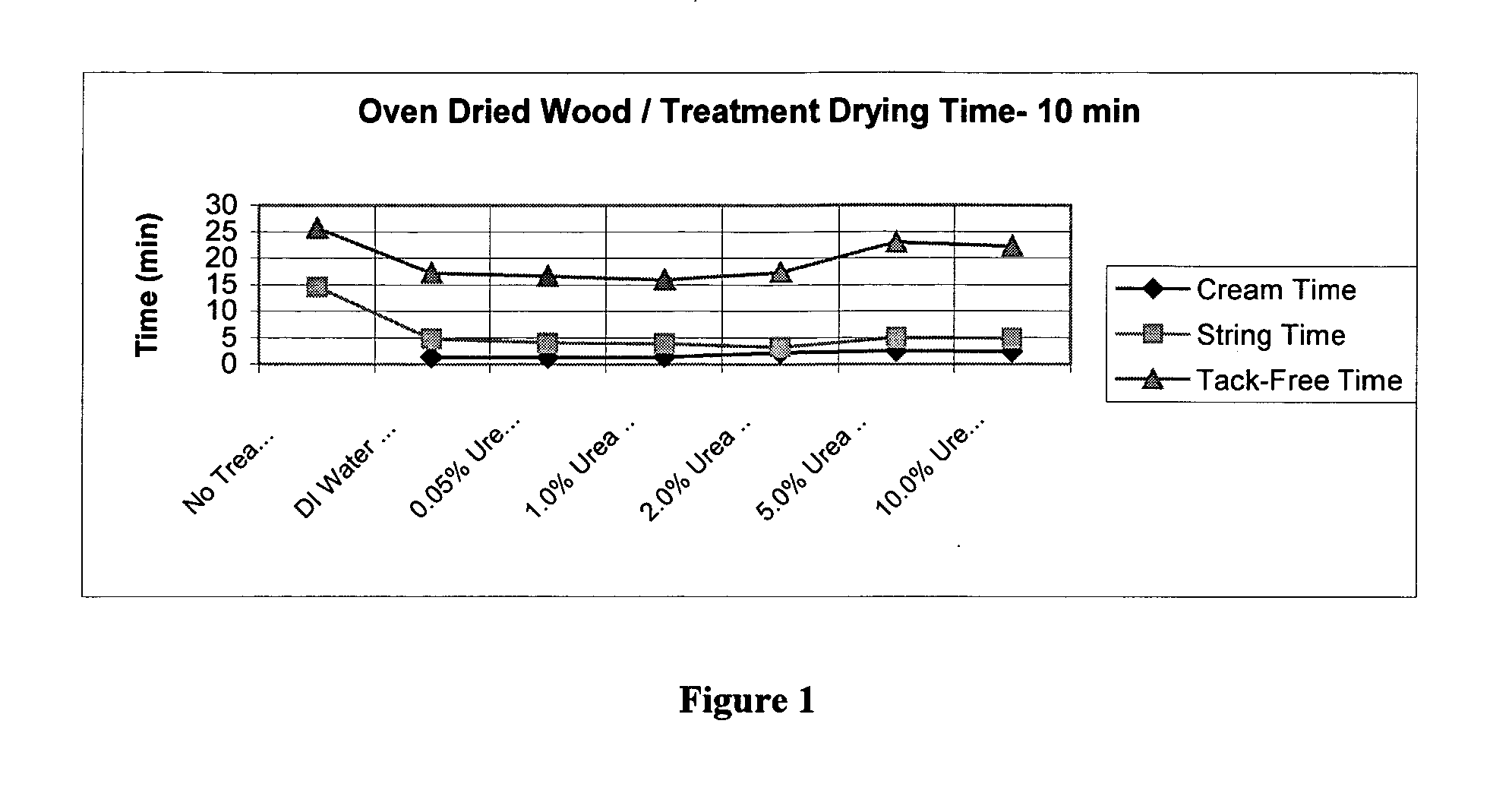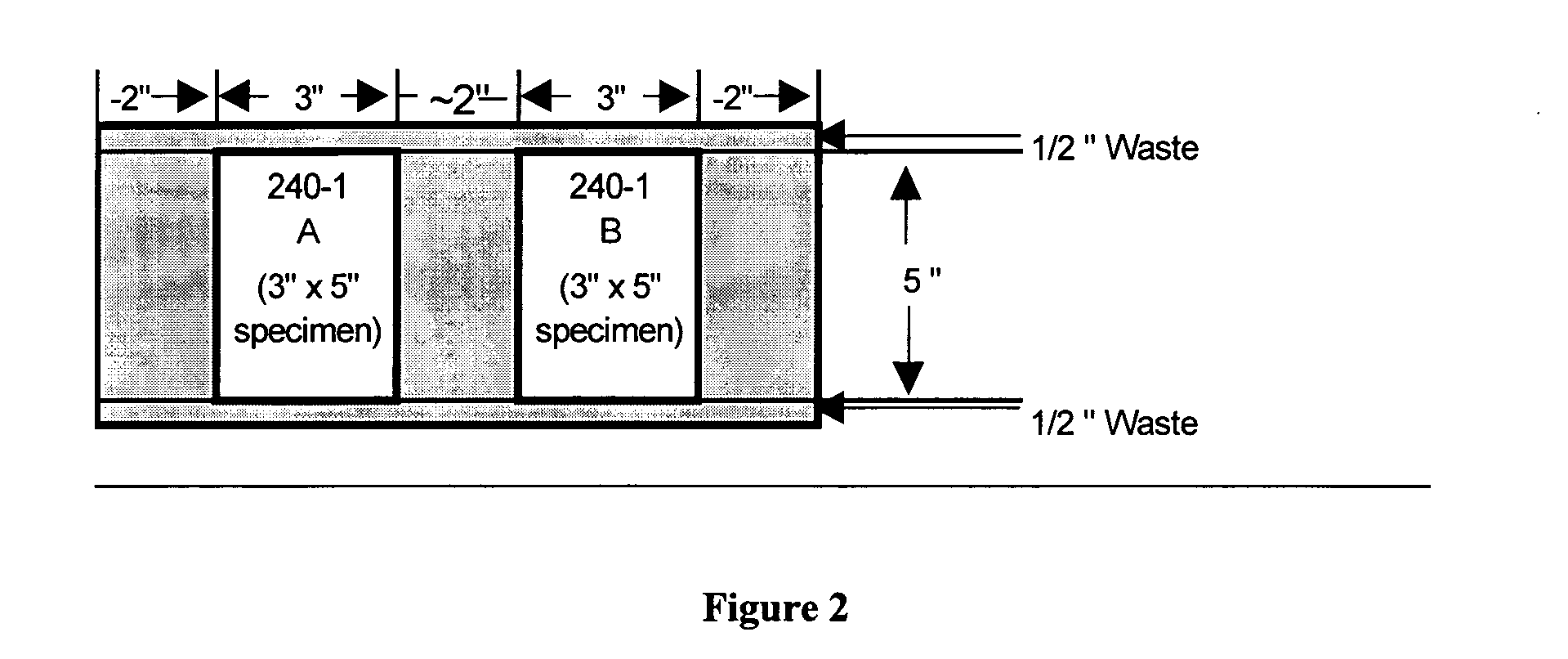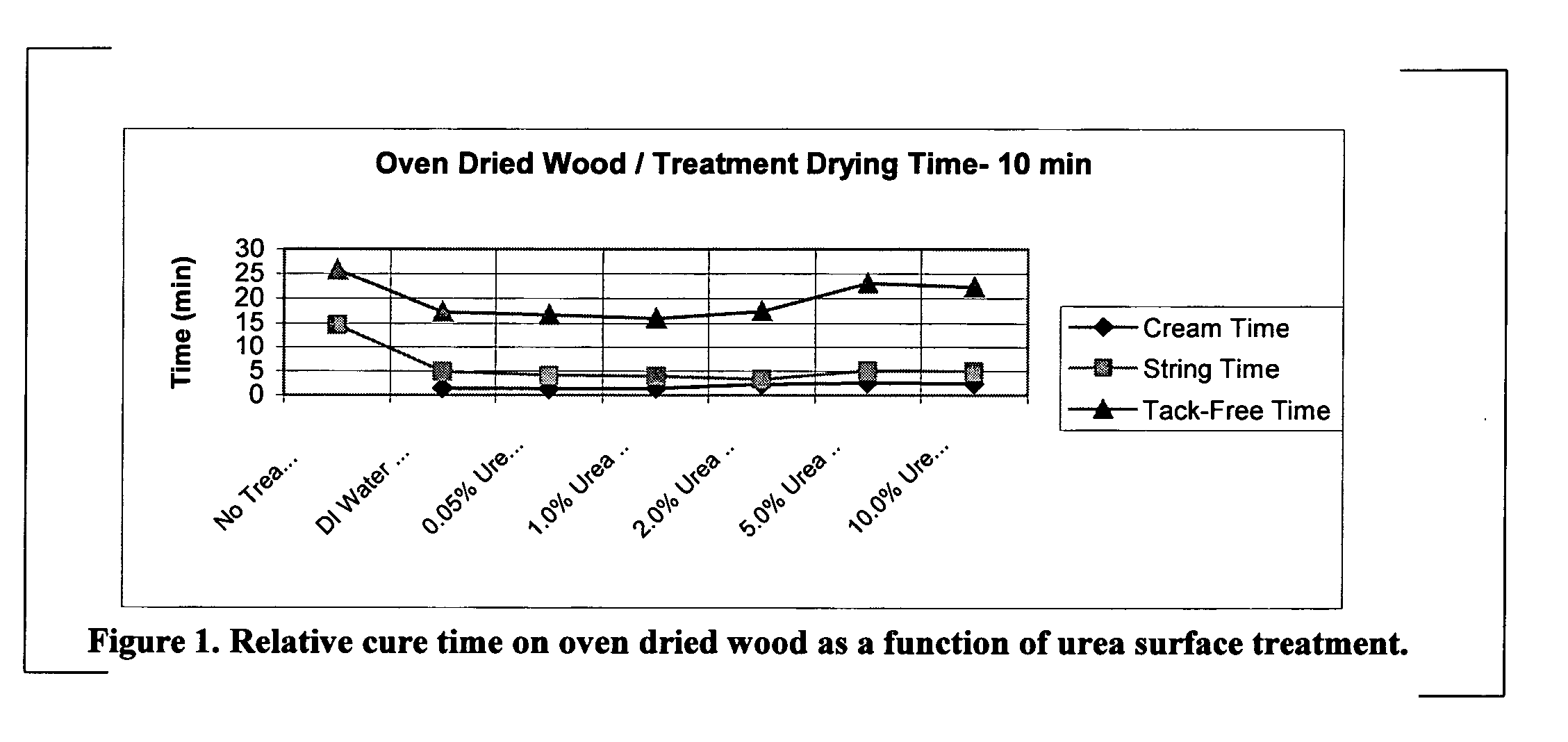Lignocellulosic composites, adhesive systems, and process
- Summary
- Abstract
- Description
- Claims
- Application Information
AI Technical Summary
Benefits of technology
Problems solved by technology
Method used
Image
Examples
example 1
[0115] In this Example, it is surprisingly found that an aminosilane, which has the ability to self-polymerize, performs no better than simple urea as adhesion promoter on Southern Yellow Pine. Also, given that the improvement does not seem to be specific to acid or base (compare results obtained with acetic acid, and with sodium hydroxide), there is no reason for one to have anticipated that urea would work as an adhesion promoter.
The Effect of Surface Treatment on Bond Strength of Southern Yellow Pine.
[0116] The bond strength of a one-part moisture curable adhesive (LINESTAR® 4605 adhesive) to Southern Yellow Pine (SYP) was evaluated with and without the use of various wood surface treatments (via a compressive shear test similar to that described in ASTM D2559). 2″×2″×¾″ SYP blocks were separated into pairs, and were pre-conditioned for 24 hours under ambient laboratory conditions (23° C., approximately 25% RH) prior to treatment.
[0117] The “surface treatment compounds” for t...
example 2
[0122] The next example illustrates that the improvement in bond strength is not monotonic with surface treatment concentration. Instead, there is a plateau beyond which no improvement is achieved. This sets the stage for Example 4, which surprisingly suggests that there may be an optimum urea concentration which (although not wishing to be bound to any theory) may arise not because of an improvement in bond strength but because of a concentration effect on open cure time of the adhesive.
The Effect of Surface Treatment Concentration on Shear Strength of Southern Yellow Pine
Wood Conditioning:
[0123] 2″×2″×¾″ Southern Yellow Pine wood blocks were conditioned for 48 hours in a Form a Scientific Model 3940 “Reach In Incubator” set at 45% relative humidity at 38° C. The resulting wood moisture content was 8-9% as measured by a Wagner Model L606 handheld moisture meter.
Surface Treatment Solution Preparation:
[0124] 200 g solutions of urea (Sigma 99.5% Urea CAS #57-13-6) in deionized...
example 3
[0127] This Example illustrates the surprising discovery that improvements in bond strength can be achieved through a non-conventional use of surface treatments. Those skilled in the art of adhesion chemistry can appreciate that surface treatments or “primers” are most beneficial when they are applied to the substrate prior to the application of a coating or adhesive. In fact, Examples 1 and 2 demonstrate the use of such conventional methods for surface treatment application. However, as shown in Example 3, a non-conventional method is also apparently capable of providing an improvement in bond strength.
Effect of Application Method on Shear Strength
Wood Conditioning:
[0128] 2″×2″×¾″ Southern Yellow Pine wood blocks were conditioned as described in Example 2.
Surface Treatment Preparation:
[0129] A solution of 10% by weight urea (Sigma 99.5% Urea CAS #57-13-6) in deionized water (Fisher Scientific DIUF CAS # 7732-18-5) was prepared as described in Example 2.
Block Shear Prepara...
PUM
| Property | Measurement | Unit |
|---|---|---|
| Solubility (mass) | aaaaa | aaaaa |
| Molecular weight | aaaaa | aaaaa |
Abstract
Description
Claims
Application Information
 Login to View More
Login to View More - R&D
- Intellectual Property
- Life Sciences
- Materials
- Tech Scout
- Unparalleled Data Quality
- Higher Quality Content
- 60% Fewer Hallucinations
Browse by: Latest US Patents, China's latest patents, Technical Efficacy Thesaurus, Application Domain, Technology Topic, Popular Technical Reports.
© 2025 PatSnap. All rights reserved.Legal|Privacy policy|Modern Slavery Act Transparency Statement|Sitemap|About US| Contact US: help@patsnap.com



